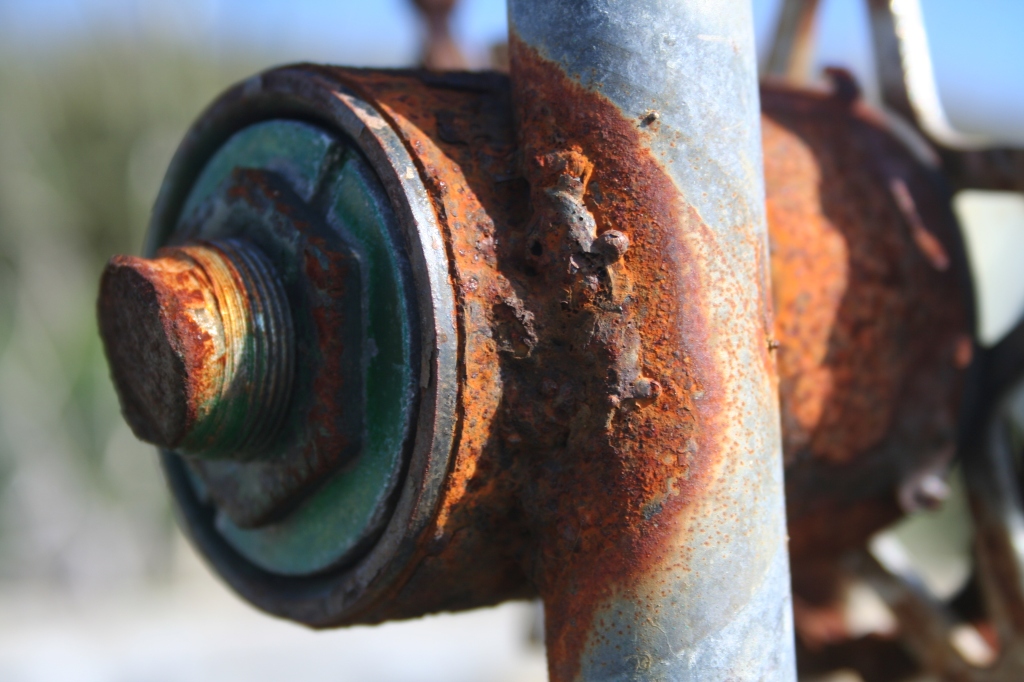Rust Formation: A Journey Through the Erosion of Time
Urban exploration has always been a fascinating endeavor, allowing us to uncover hidden treasures and forgotten stories within the confines of our bustling cities. Among the many curiosities encountered during these explorations, rusted objects stand out as silent witnesses to the relentless passage of time. Rust formation is not only an aesthetic phenomenon but also a testament to the inexorable erosion that affects both man-made structures and natural elements.
Rust, scientifically known as iron oxide, is commonly associated with metal corrosion caused by exposure to oxygen and moisture. Its reddish-brown hue adds an intriguing layer of beauty and decay to abandoned buildings, vehicles, bridges, and other remnants of our industrial past.
To truly appreciate rust’s visual allure, one must understand its underlying chemical process. When iron or steel comes into contact with air or water vapor containing oxygen molecules (O2), a reaction takes place. The iron atoms lose electrons in this reaction and become positively charged ions known as cations (Fe2+). These cations then combine with oxygen atoms from the environment to form ferrous oxide (FeO) or ferric oxide (Fe2O3), depending on specific conditions.
The transformation from metallic luster to rusty patina occurs gradually over time as oxidation progresses. Initially appearing as small flecks on a surface, rust slowly spreads its characteristic coloration across larger areas until it completely engulfs the object in question. This process can take years or even decades; each flake crumbled away reveals glimpses into history while simultaneously accelerating further decay.
Interestingly enough, rust formation possesses both destructive and protective qualities. On one hand, it weakens metals by corroding their structure through oxidation; on the other hand, it forms a thin layer that acts as a barrier against further degradation once it stabilizes.
Exploring urban environments often leads us to derelict factories where machinery and equipment once roared with life. Now, these hulking masses of iron and steel stand silently, their surfaces transformed into intricate tapestries of rusty patterns. From the delicate lace-like designs on old steam engines to the abstract art created by cascading rust on abandoned conveyor belts, each piece tells a story of industrial glory long faded away.
Railroads provide a particularly rich canvas for rust formation. The parallel lines stretching towards the horizon carry not only trains but also tales of human ingenuity and progress. Railway tracks, exposed to the elements year-round, exhibit various stages of corrosion. Some sections showcase freshly laid metal gleaming like polished silver while others display a captivating mix of reds, oranges, and browns that reveal decades or even centuries worth of history.
Bridges are another captivating example where rust formation juxtaposes strength and vulnerability. These towering structures symbolize connection between communities but are themselves subject to nature’s forces. Over time, steel beams succumb to rust’s grip as it creeps along their surfaces like ivy on an ancient castle wall. The sight evokes both awe at the engineering marvels before us and respect for the relentless power of decay.
Beyond abandoned buildings and transportation infrastructure lies another world where rust finds its home: natural landscapes shaped by time itself. Rocks colored by iron-rich minerals expose layers upon layers marked by eons of geological changes. Waterfalls cascade down cliffs leaving behind stains that trace their paths over millennia.
In coastal areas where saltwater mingles with air, nature showcases its artistic prowess through unique formations known as “rusticles.” These underwater stalactites appear in shipwrecks or other submerged structures as iron-eating bacteria feast on corroded metal parts over decades or even centuries.
Rust is more than just a visual phenomenon; it serves as a reminder that nothing is permanent in this ever-changing world we inhabit. It teaches us to appreciate beauty in decay while also urging us to preserve the structures we hold dear. Urban explorers play a crucial role in documenting and sharing these stories, ensuring that rust’s tales are not lost to time.
So, next time you embark on an urban exploration adventure, take a moment to admire the intricate patterns etched by oxidation. Marvel at rust’s ability to transform mundane objects into pieces of art. And remember, as you witness the beauty and fragility of rust formation, that it serves as a powerful metaphor for our own transience within this vast tapestry called life.

Leave a comment